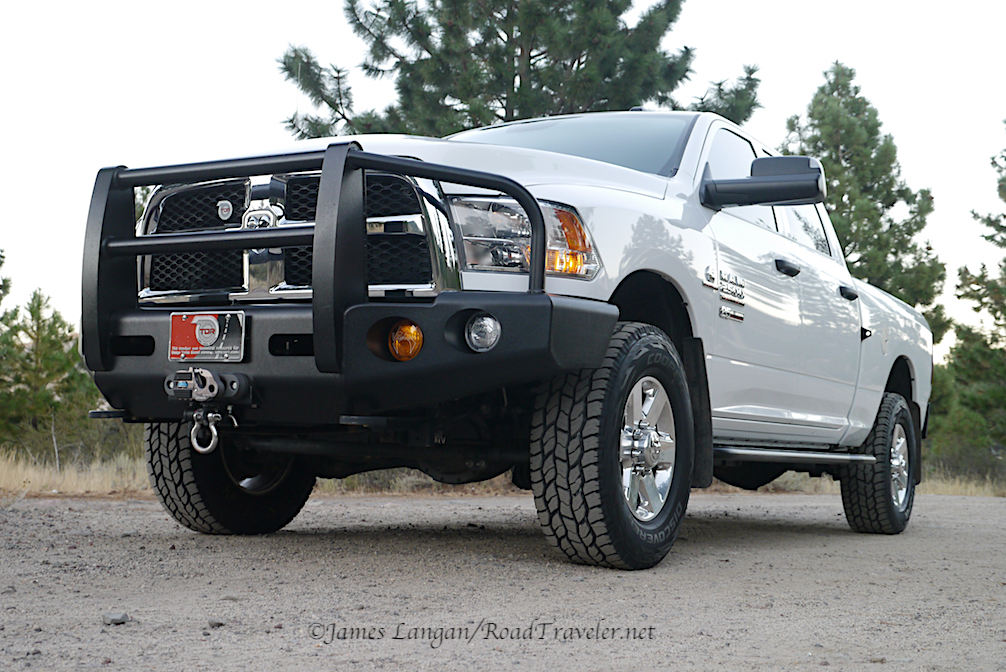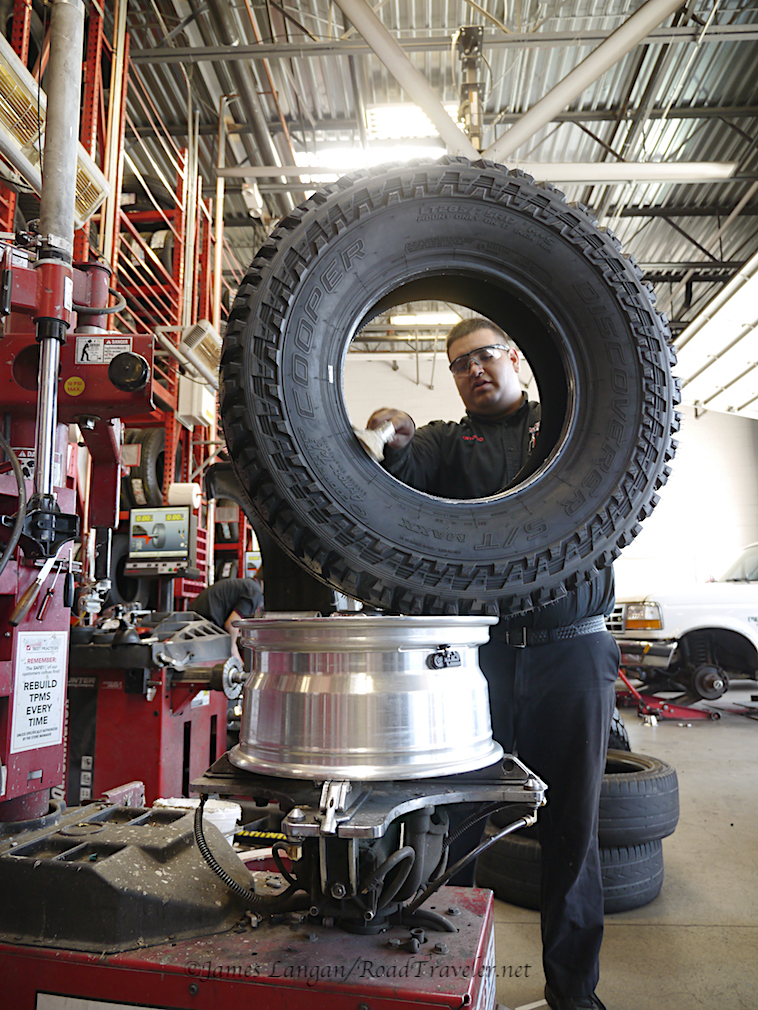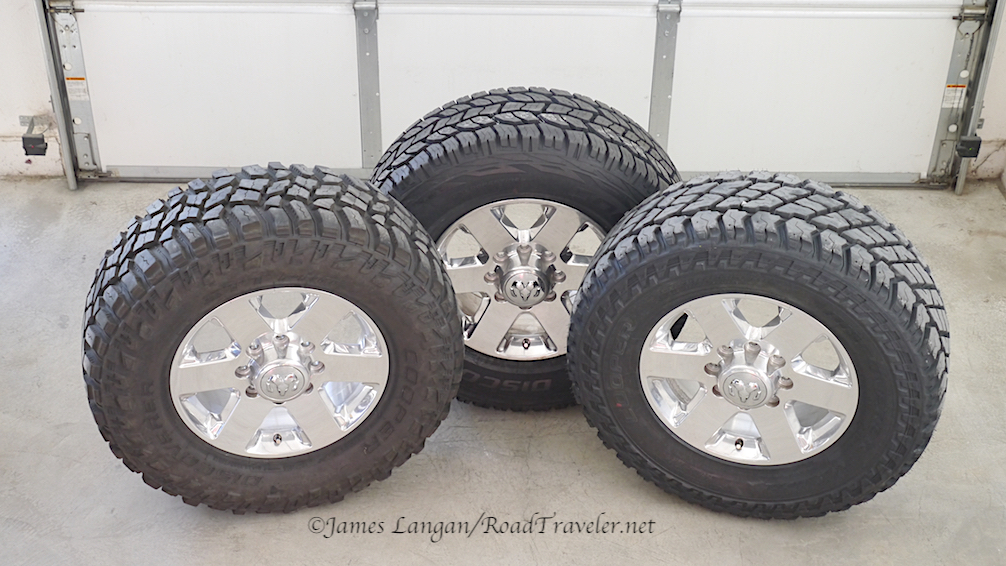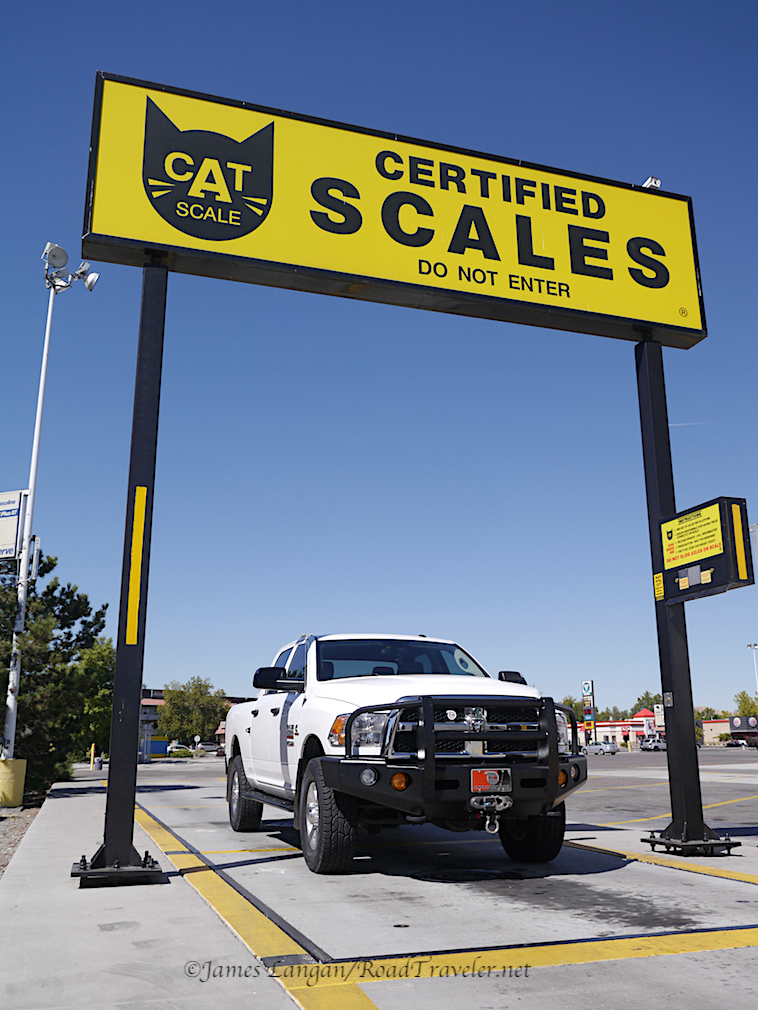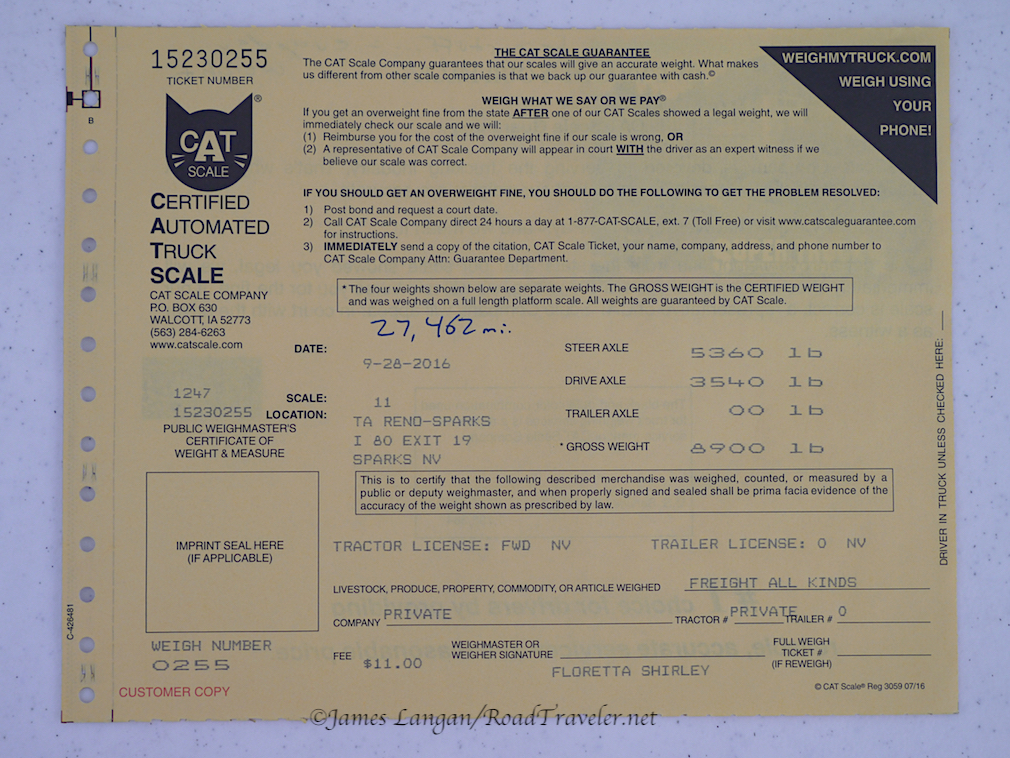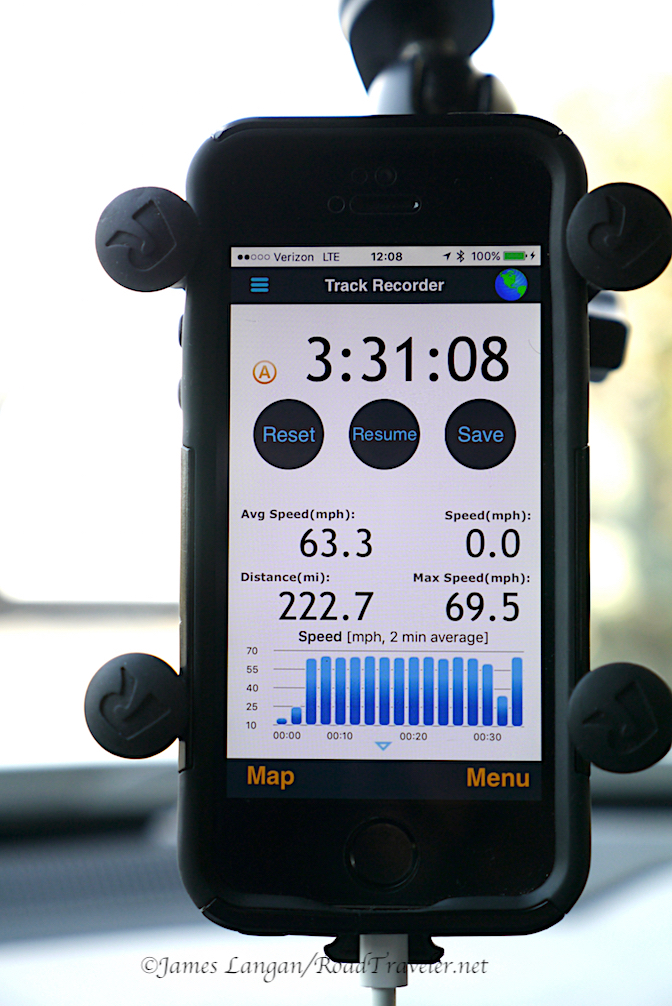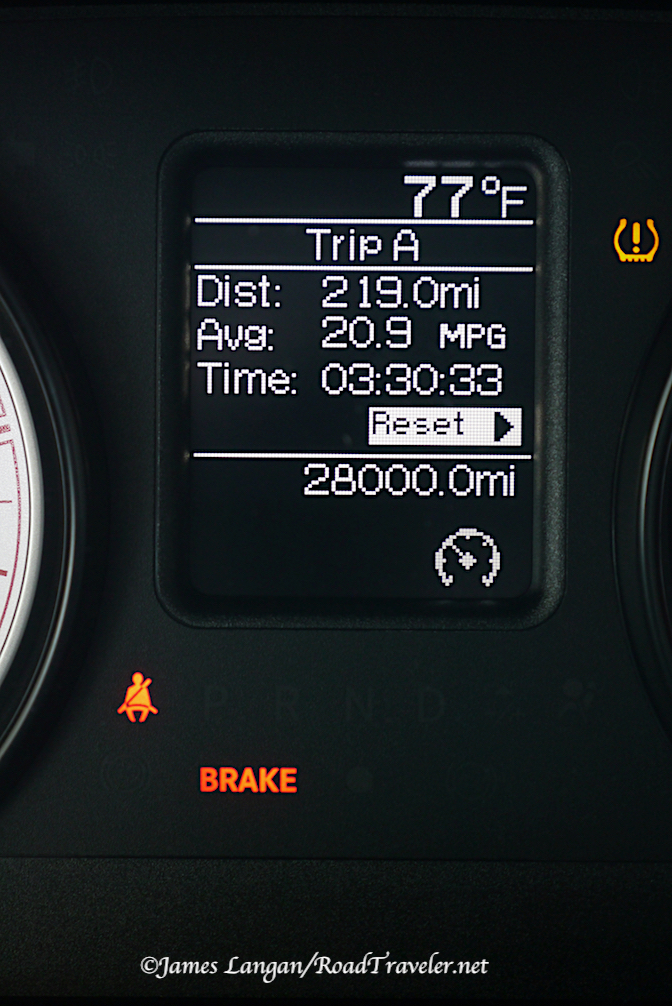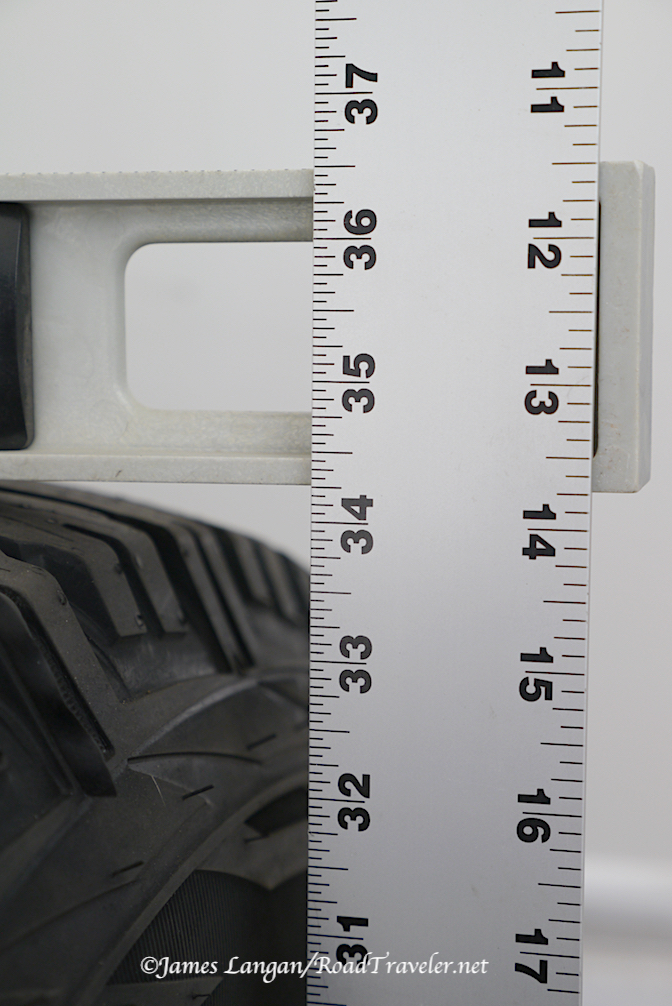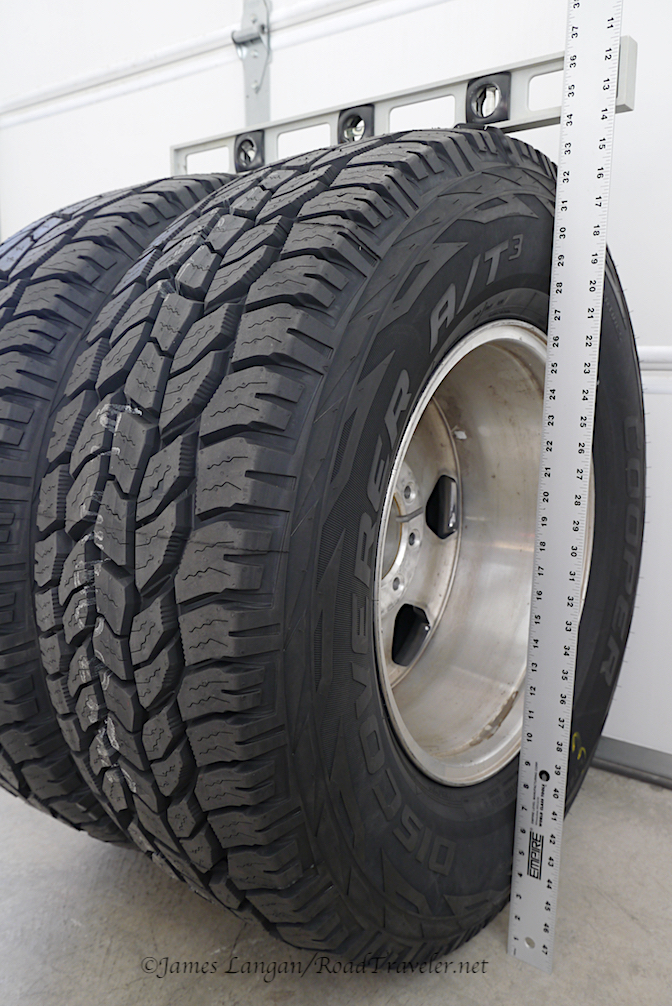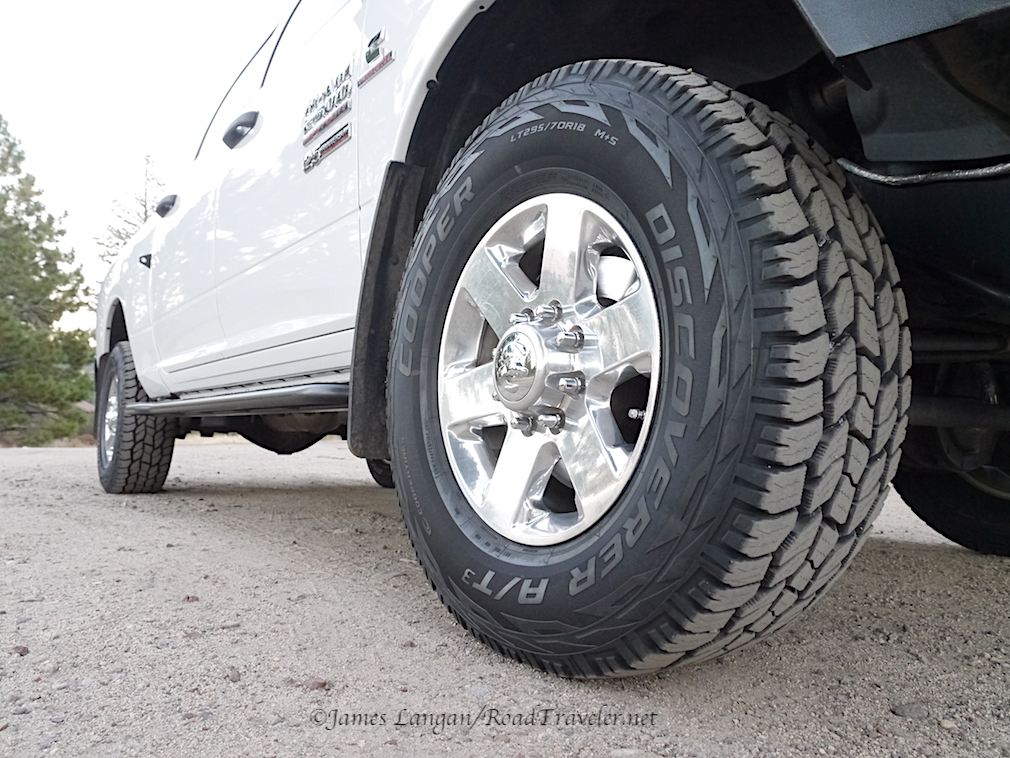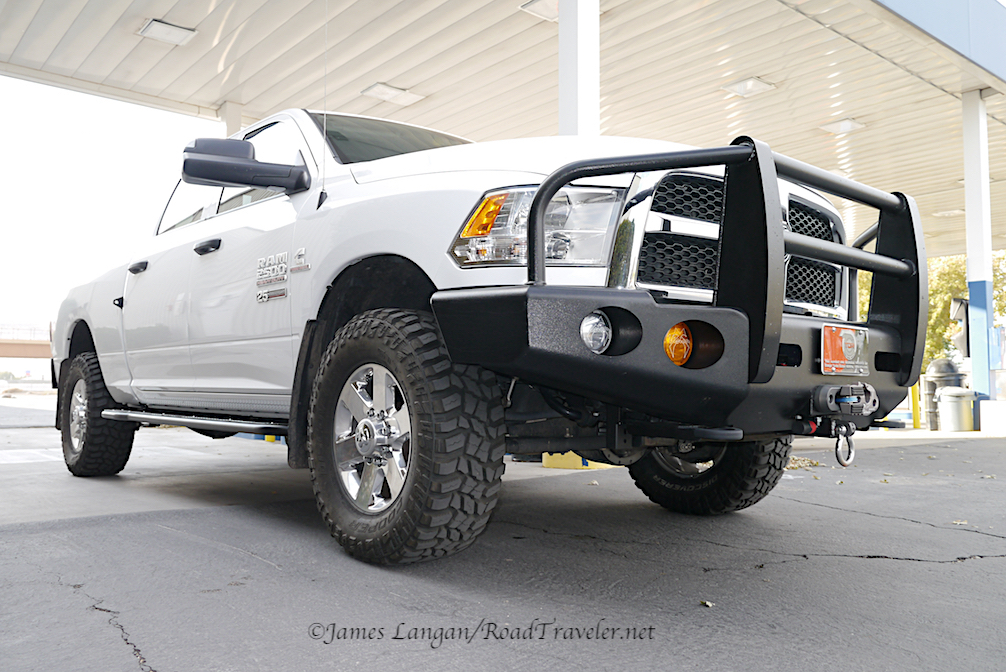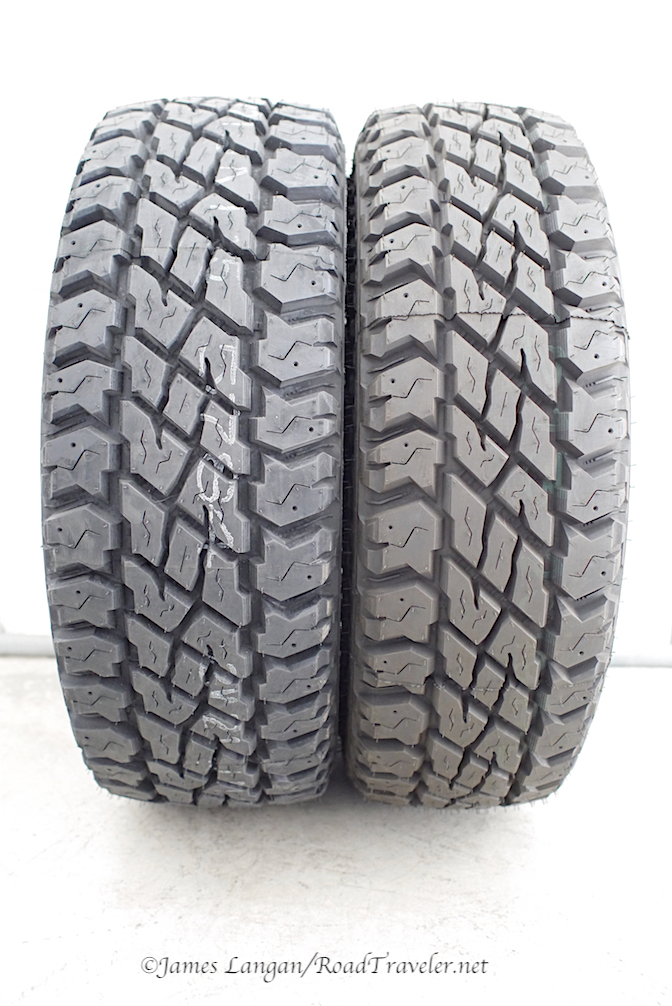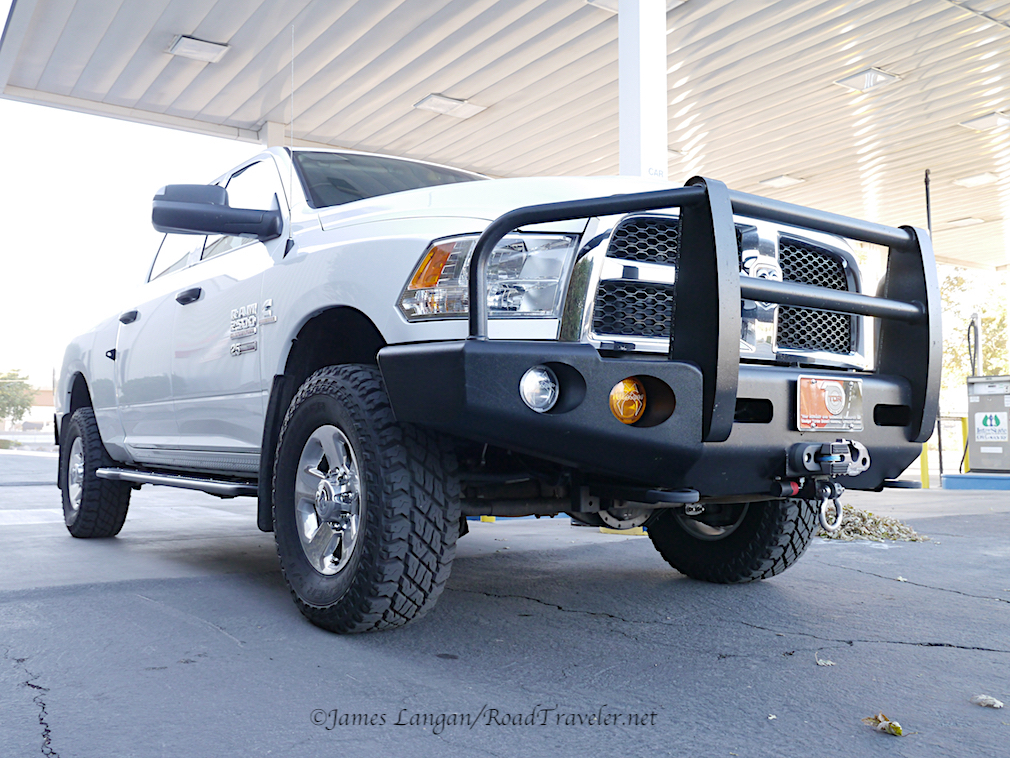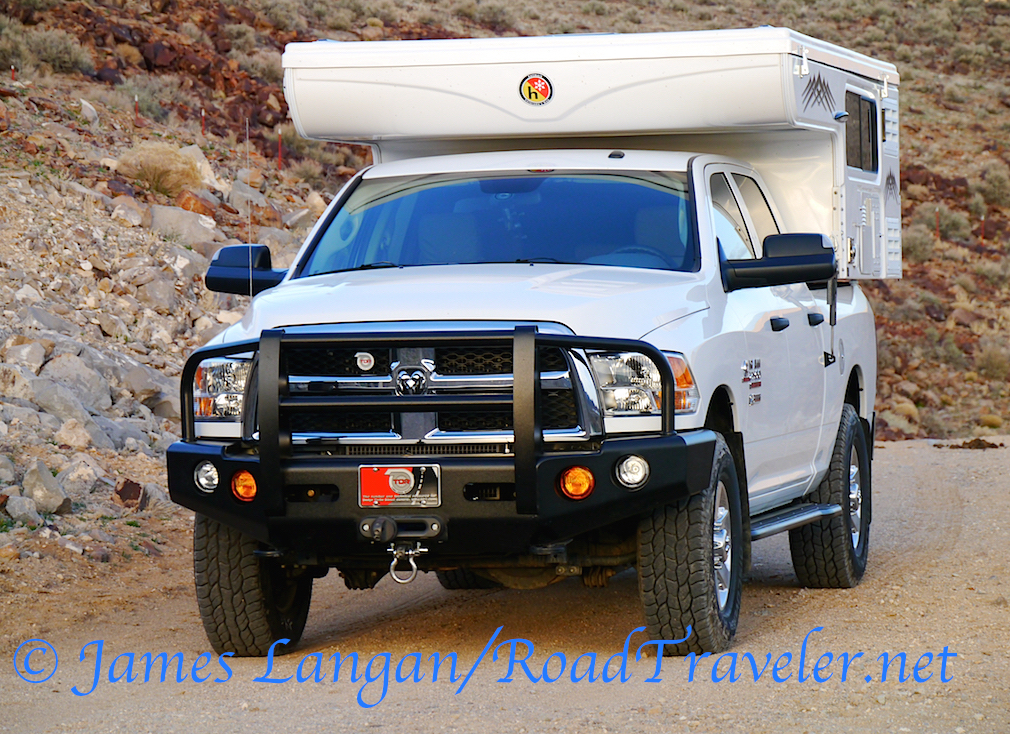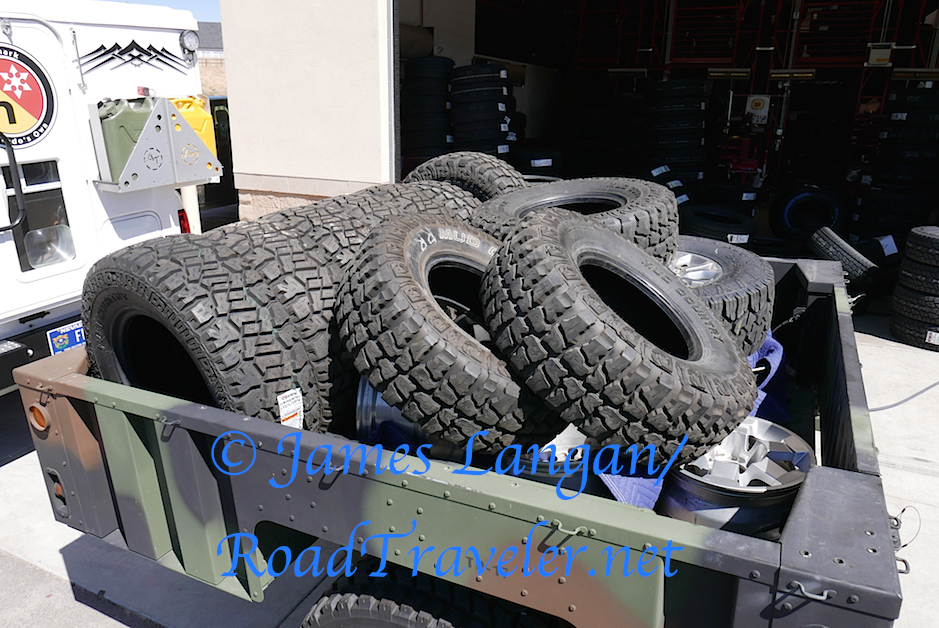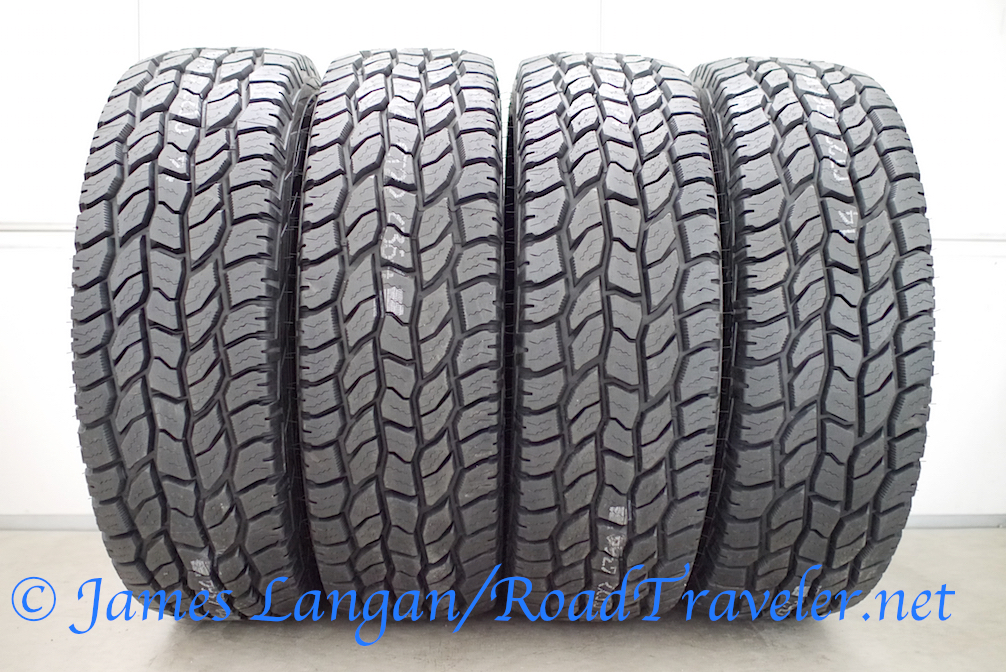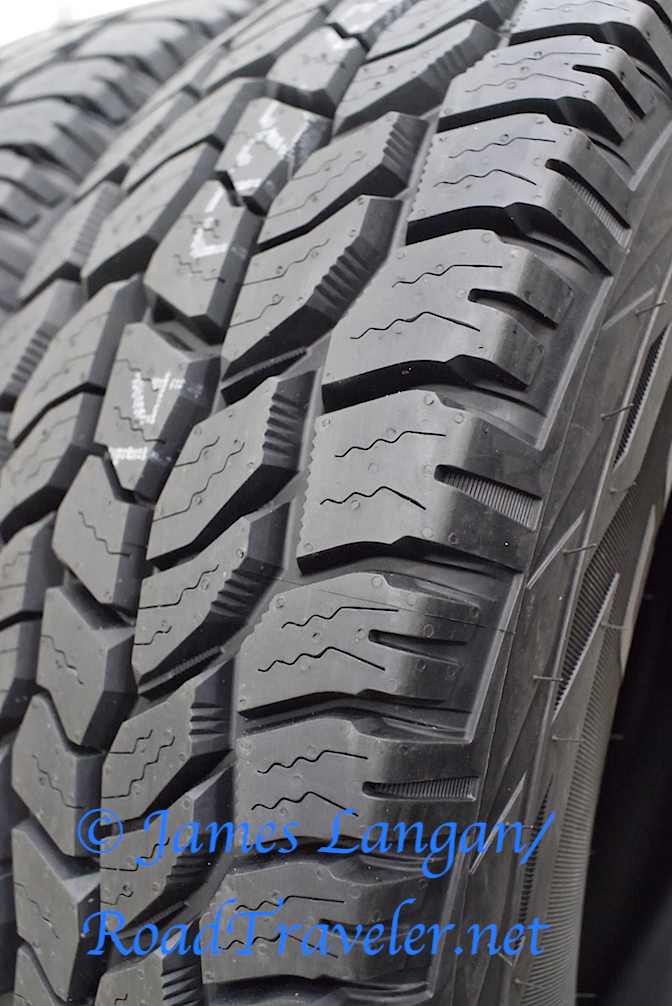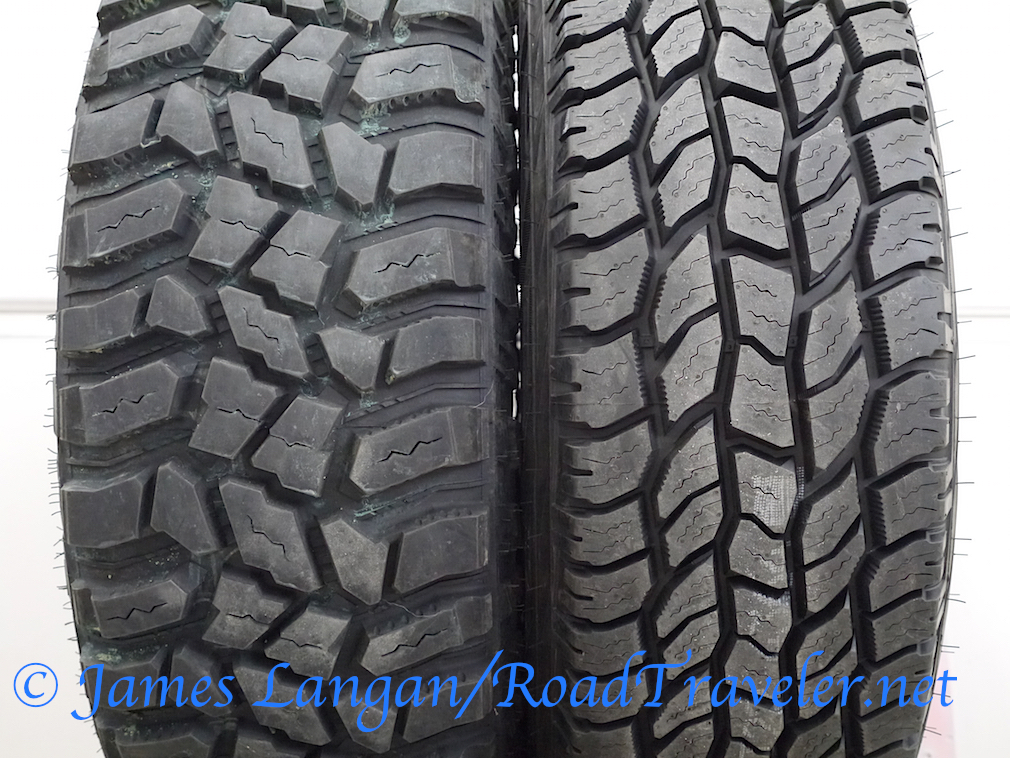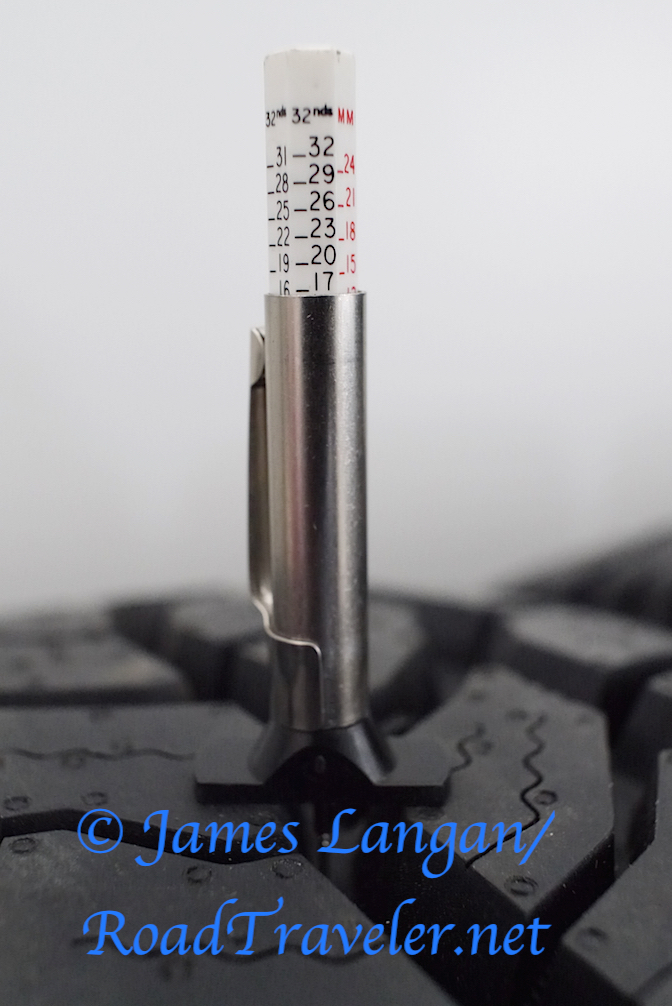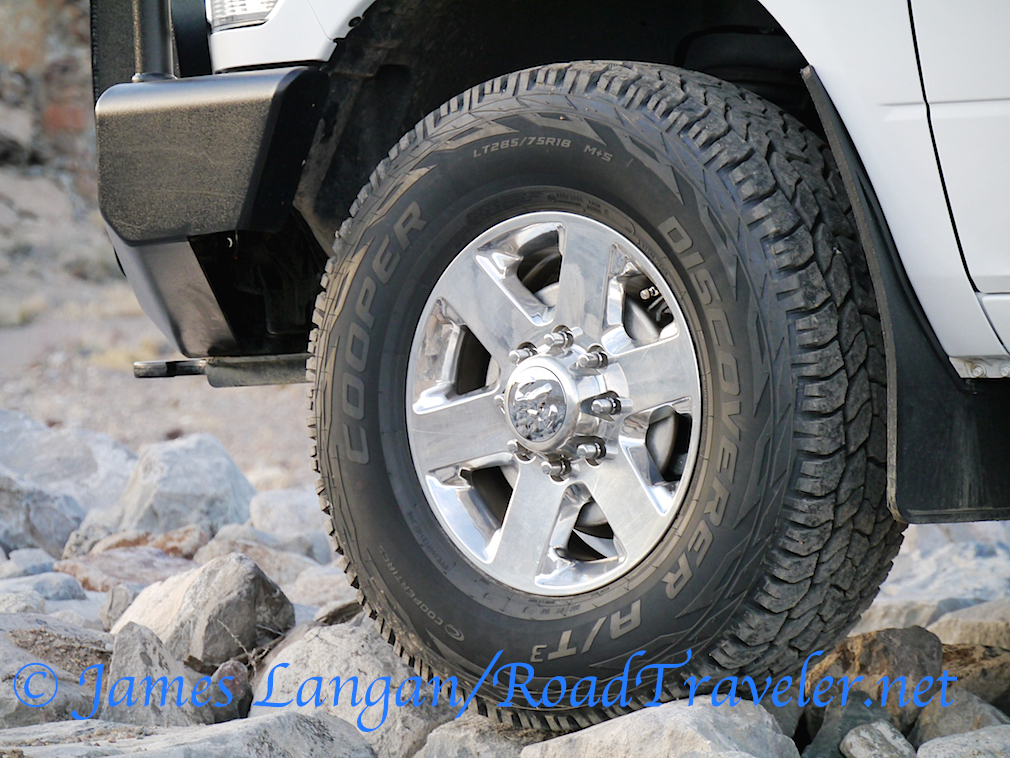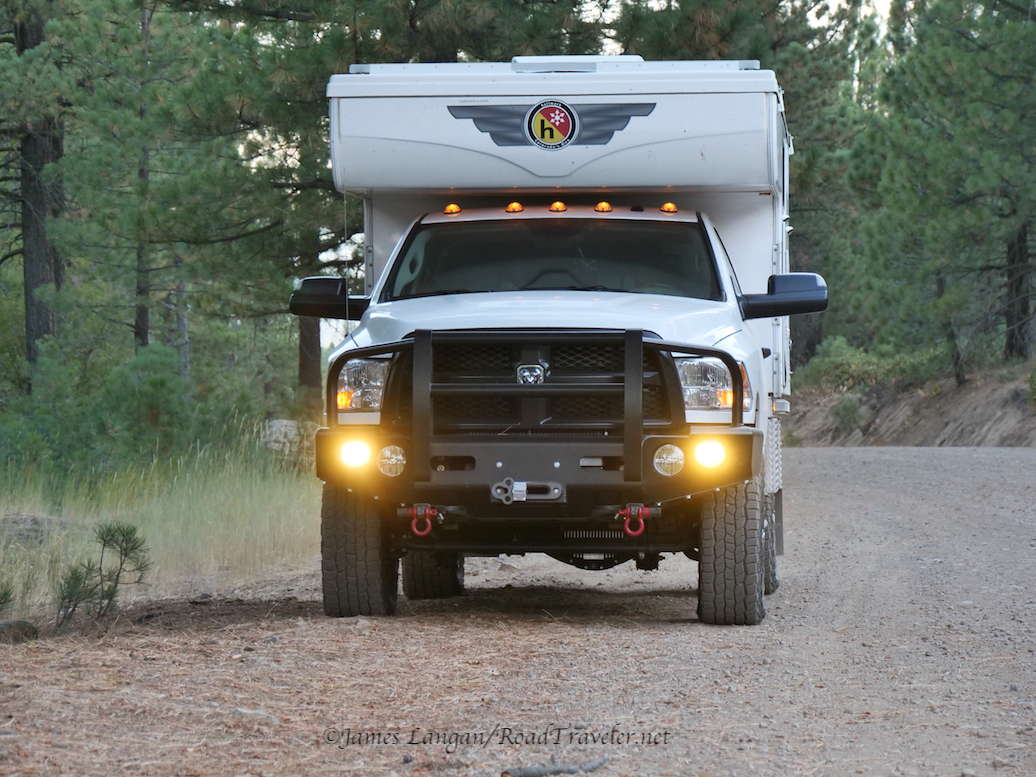
Tires As Suspension
In the high-performance car (and even sport-truck) world it’s obvious that tires are a critical part of the suspension setup and the overall dynamics and handling of a vehicle. In the heavy-duty pickup world tires should be regarded with similar importance regarding how they handle loads, although it seems this is frequently ignored or overlooked until a problem arises. Such laissez-faire attitude seems more prevalent with those who infrequently work their trucks.
Unless one is never going to load their rig, generally aftermarket tire-and-wheel combinations should not have less capacity than the originals. However, just because a tire can support a particular load does not mean it is providing optimal performance. There are many potential differences, which include the tire size, load index, maximum psi, construction, tread pattern and compound, etc. Here is a real-world example of how dramatically tires can affect handling?
Surefooted Mule To Wallowing Pig
While driving to the 2019 Overland Expo West show last May, my ‘Mule started handling poorly. What I discovered, arriving in Flagstaff, Arizona, was that I had lost a bolt clamping the anti-roll bar to the rear axle. This rendered the bar useless and explained the sketchy handling I was experiencing.
On a coil-sprung vehicle, particularly one with a maximum and tall load, body-roll bars can be critical for safe handling, particularly during emergency maneuvers. To mitigate the then unexplained sloppy handling, twice I stopped to increase tire pressures. Adding 20 psi and over-inflating the 65-psi-maximum tires made a slight but still noticeable stability improvement. It firmed-up the relatively tall and flexible 35” tire sidewalls on 17” wheels, partially compensating for the looseness of the disconnected rear body-roll bar.
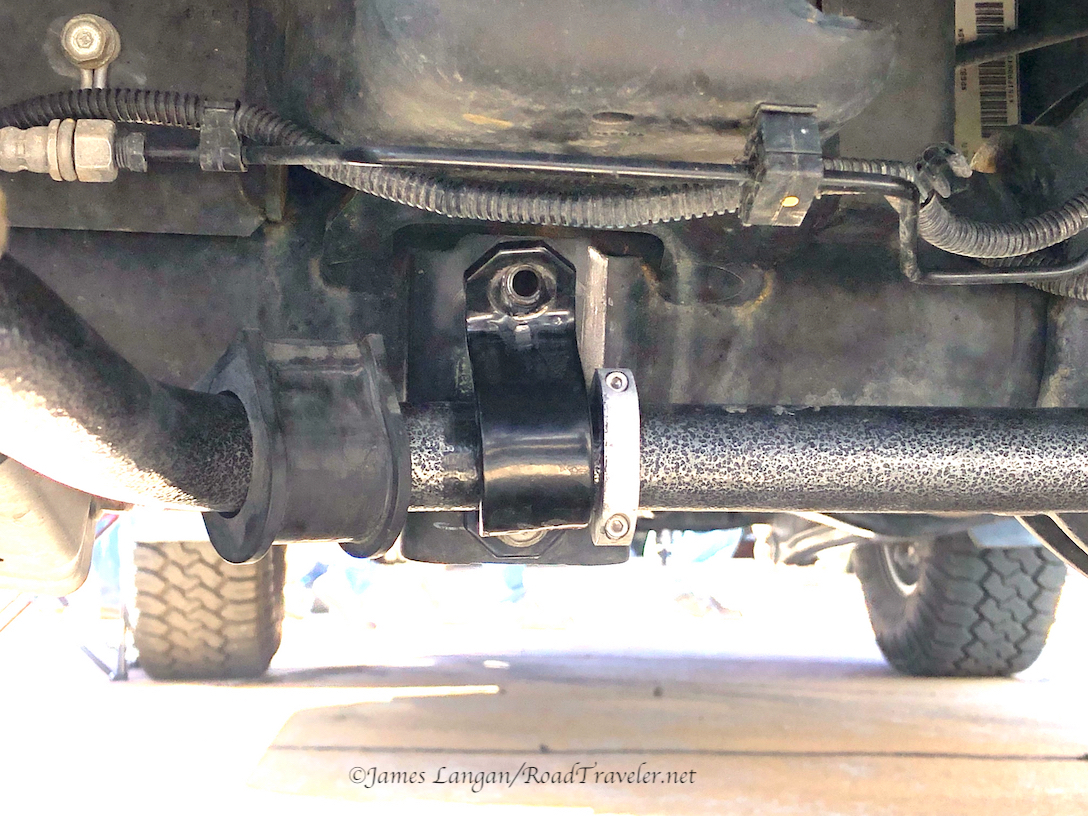
Thankfully my friends at Factor 55 had a block of titanium on which we pounded the deformed bushing bracket back into a usable shape. Another friend had a spare fastener. Seems losing anti-sway bar bolts on late-model Ram 2500s is not that uncommon. My friend was carrying a spare bolt because he had previously lost one himself; we both have the same Hellwig Big Wig rear bar. Another acquaintance at the event had also found a bolt missing on his factory rear bar while in Death Valley. So owners of newer Rams might want to check their sway-bar hardware, add some Loctite, and torque ‘em.
Air Supports Weight
It’s important to remember that it’s the total amount of air in a tire that supports weight; this includes the physical volume combined with the psi. This is one reason why some of the super-short sidewall tires are not appropriate for heavy-duty pickups; the ratings can be ridiculously low, partially because there is not enough physical space for adequate compressed air.
Unreasonably short sidewalls (think low-rider) will provide a firm, sometimes even jarring ride over small imperfections in the roadway, and in extreme cases potholes might bend a wheel because the thin sidewall does not provide adequate impact absorption. With that visual in mind, it can be helpful to think of tires as the biggest shock absorbers (dampers) on trucks. They can work in our favor or against us. Softer, tall-sidewalls can absorb impacts and improve ride quality for one application, or reduce control and handling on another. Adjusting the pressure or changing the size can increase or decrease overall performance.
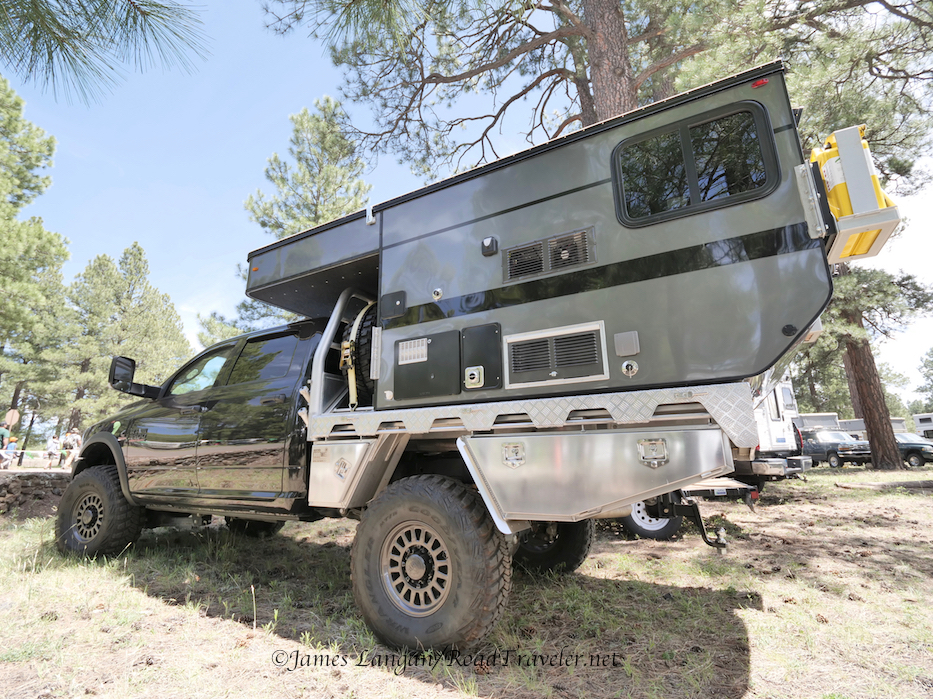
My dislike for huge wheels with silly shortsidewalls on four-wheel-drive pickups emanates from decades of actually using trucks for off-pavement travel instead owning them as a fashion statement. What constitutes a silly short sidewall on a four-wheel-drive depends on the diameters of both the wheel and tire, but historically an aspect ratio below 70-percent might qualify. However, the aspect ratio alone does not tell the whole story, as it is a percentage of the width. A bigger wheel and tire combination with a lower aspect ratio might still have enough sidewall to work well off-pavement, while providing superior control on-road, particularly with a massive load.
Function Over Form
There’s little doubt that the humongous big-wheel craze on pickups (20” and taller) is mostly the result of the street-truck culture, not farmers and ranchers, heavy haulers, or commercial industries. Brakes are much larger on modern vehicles, but it doesn’t take 20” wheels to clear them. My recent interest in bigger wheels with shorter sidewall rubber is for optimal chassis stability and performance with my Hallmark camper; I prefer the traditional look of more tire and less wheel.
Many late-model diesel pickups are delivered with thirty-threes mounted on 18” wheels, and have a 7.5” sidewall. (Overall diameter minus the wheel height divided by two equals sidewall height.) Increasing tire diameter to 35” on an 18” wheel produces an 8.5” sidewall, an almost 14% increase. The same 35” rubber on a 17” wheel produces a 9” sidewall, which is a substantial 20-percent increase over the stock LT275/70R18 size. Using a 20” wheel for a thirty-five brings the sidewall height back down to 7.5”; same as the factory thirty-three on an 18” rim.
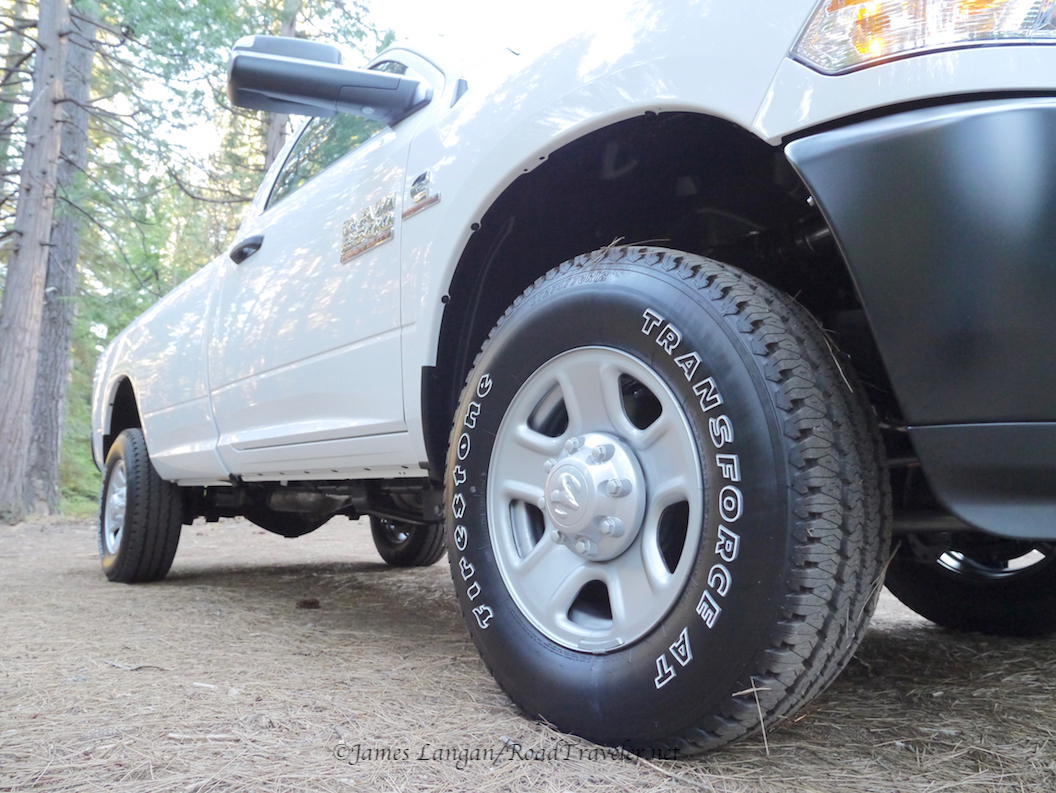
If you think a 35” tire is huge, think again. Most new heavy-duty Rams will fit a narrow 35” tire (LT285/75R18) on stock wheels with little or no rubbing, and only minor rubbing on the radius arms at full-steering-lock if a wider, 35×12.50R18 is squeezed onto the factory rims. Running only 35s on my fourth-generation Ram/Cummins 2500s puts me in the smaller tire club; 37s on aftermarket wheels are the popular cool choice for many.
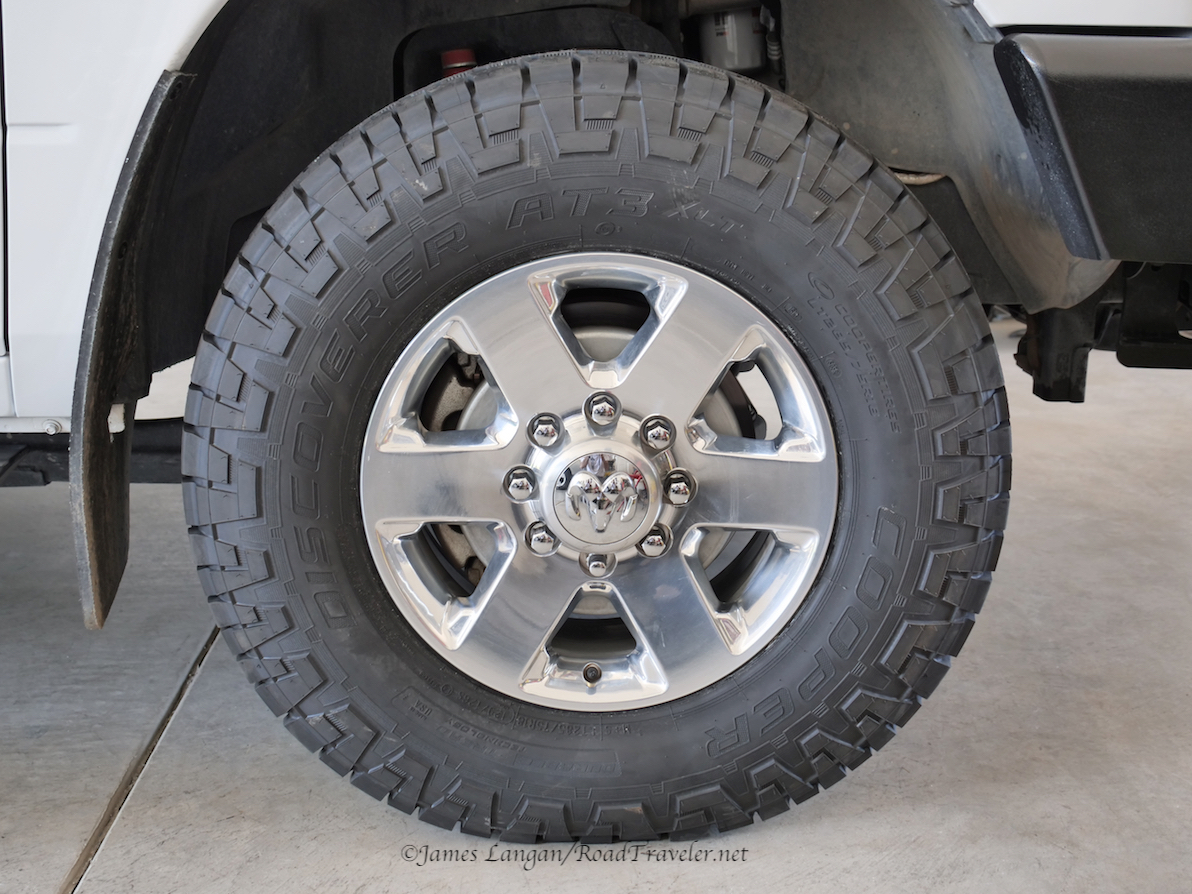
Are 19.5” Wheels and Medium-Duty Tires The Answer?
Some of the heavy-hauling crowd, particularly those with cab-over campers, found a solution decades ago with 19.5” medium-duty commercial tires when there were fewer tire size options. Rickson Wheel Manufacturing was founded to service this niche. The enthusiast owner started making 19.5” SRW 8-lug wheels to fit heavy-duty pickups because he was burning through sets of 16” rubber on his camper-equipped second generation Dodge Cummins turbo-diesel. This was before the excellent availability of 18” and 20” light-truck tires and wheels, which can offer up to 35% more capacity per tire than the sixteens of the 1990s.
In addition to superior load support and firmer handling provided by the much stiffer 19.5” components, there are theoretical benefits of substantially more longevity. I have yet to find a well-documented, back-to-back comparison proving similar tread design medium-duty rubber lasting much longer than a commercial-grade modern LT tire. I don’t doubt that it is possible, but show me. Medium-duty tires typically cost more, so more miles may be needed to make the modification pencil-out for those wanting to save money. Tread choices are also fewer.
In addition to limited availability of 19.5 inch wheels for pickups, and the possibly too firm load range F, G, or H construction, the biggest negative I see with medium-duty rubber are the lower speed ratings. Up to 245/70R19.5, which is only a 33” tall tire, the speed rating is a reasonable 87 mph. Moving up to a 265/70/19.5 or larger size typically reduces the speed rating to 75 mph.
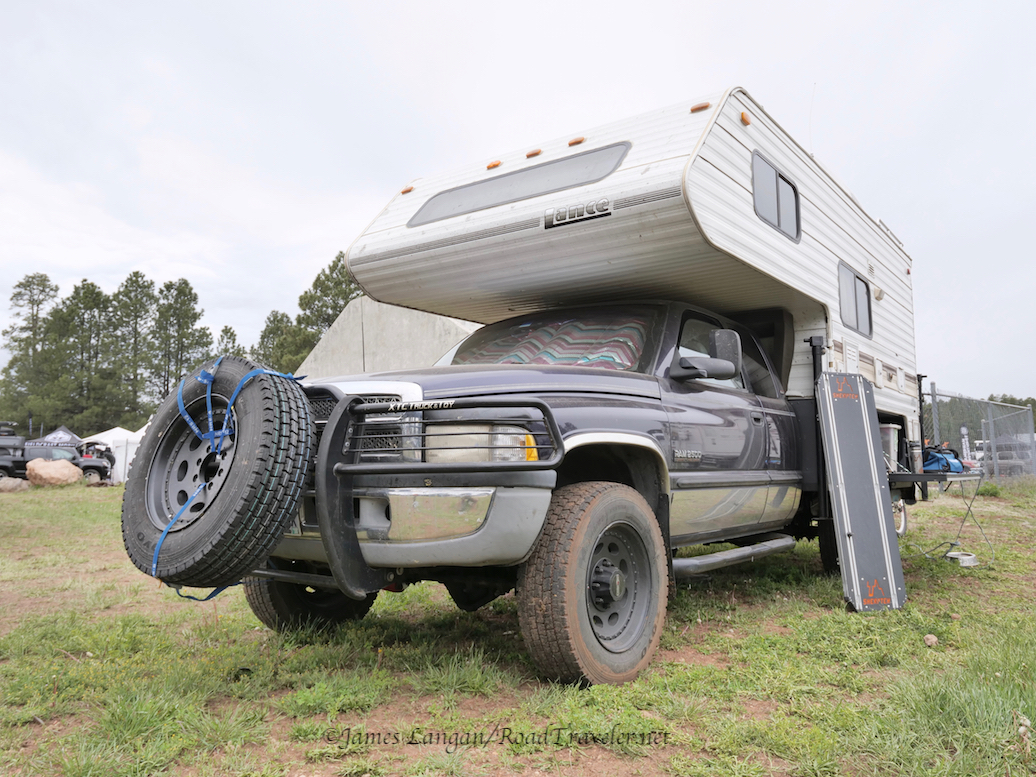
There’s one area where the folks who favor 19.5″ tires and wheels and my recent interest in modern heavy-duty light-truck 20″ tires align perfectly; it’s about how they work not their appearance.
If one is going to load their SRW chassis with more than 8,160-pounds on the rear axle, the capacity offered by load-index 129 light-truck tires, super-stout and less flexible medium-duty rubber might be necessary and/or beneficial. I have read several comments online, and spoken to others who say 19.5” tires are too stiff over rough roads, both paved and not, even on heavy trucks. On unloaded rigs, the ride is sometimes described as downright jarring. Some are willing to tolerate an extra-firm ride, but is worth remembering that unnecessary roughness will be transmitted to all chassis components, potentially reducing their longevity. Surely some folks love their 19.5” tires and wheels on SRW pickups, but they appear to be a small minority.
If someone wants to lend me a set I’d be happy to bolt them on and give them a spin. My extensive heavy-duty pickup and LT tire knowledge has repeatedly convinced me that I don’t need to spend my time and money on medium-duty rubber for my pickups. Skipping the 19.5” wheels and going straight to modern, readily available twenties made more sense.
Cooper Discoverer AT3 XLT 18” vs. 20”
In typical RoadTraveler James fashion, I did back-to-back evaluation drives to observe differences between almost identical rubber wrapped around different diameter wheels. To limit controllable variables, the same manufacturer and tread design was chosen. Without this approach, carcass construction differences and other factors would unfairly skew impressions. While construction matters (continue reading), sometimes much, the goal was to test what dynamics are affected by simply changing the wheel diameter. With that established, one can then seek tire construction and/or other suspension solutions as needed for their specific application.
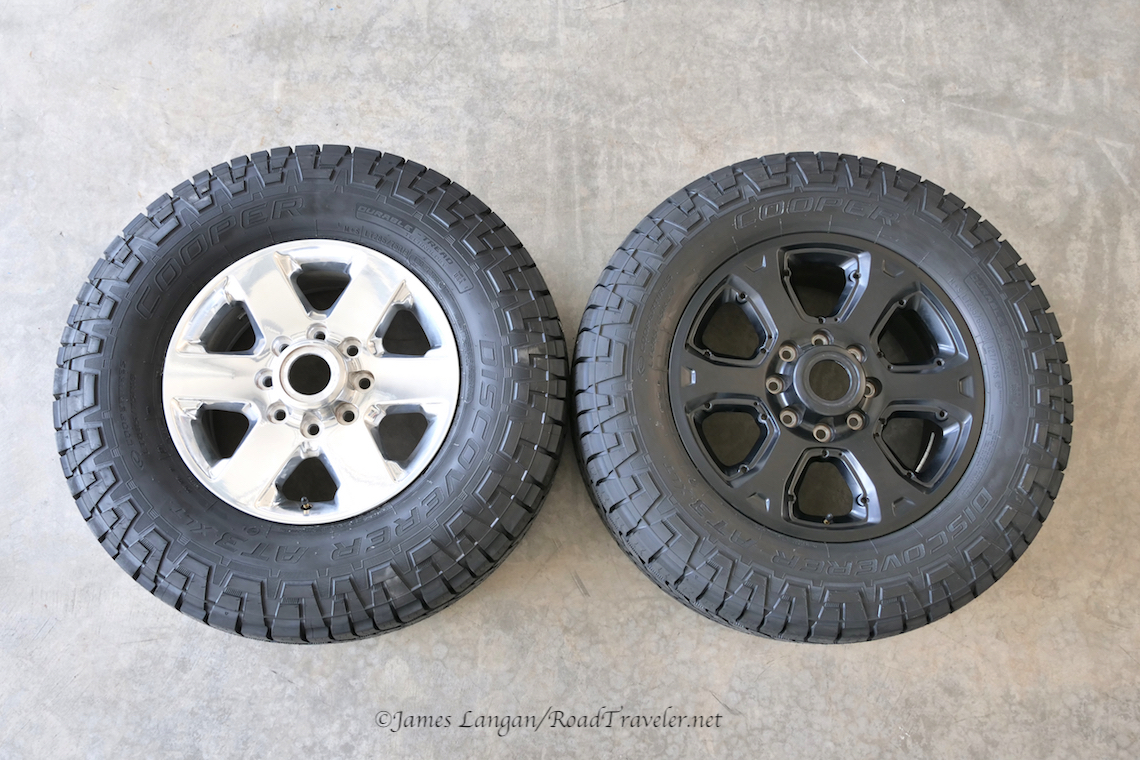
The good folks at Cooper Tires, one of the few American companies still making tires in the United States, supplied the rubber to facilitate the evaluations. The redesigned Cooper Discoverer AT3 Family of Tires was introduced at the 2018 SEMA Show. It includes three distinct models targeted at specific segments of the all-terrain market. Cooper describes the attributes of these AT3s as:
Discoverer AT34S™ Severe snow rated with improved wet weather performance, snow performance, fuel economy, and with significantly improved tread wear.
Discoverer AT3LT™ and Discoverer AT3XLT™ Designed to be powerful, shred-resistant all-terrain tires. With the Discoverer A/T3™ well-known for its long-lasting tread wear and dirt road performance, the new Discoverer AT3LT™ and Discoverer AT3XLT™ tires feature Durable-Tread Technology™, enhancing durability, and enabling a best-in-class mileage warranty.
Longevity and durability has much to do with the application and duty-cycle, but Cooper has certainly upgraded and expanded the all-terrain AT3 line to cover all consumers who want this type of five-rib tire. Heavy-duty pickup owners should look at the AT3 XLT version, as it comes in the largest sizes with the highest load ratings.
Similar But Different
Because I prefer taller and narrower sizes for most conditions, I chose the 34.84-inch-tall LT285/75R18, and the 34.57-inch-tall LT285/65R20. There is very little difference in height or width between these two sizes, for all practical purposes they are the same, with the exception of the wheel diameter, which gives the twenty a much shorter sidewall. The 285/75R18 has a 8.42” sidewall, and the 285/65R20 has a 7.28” sidewall. Both sets of tires were mounted on factory Fourth Generation Ram aluminum wheels.
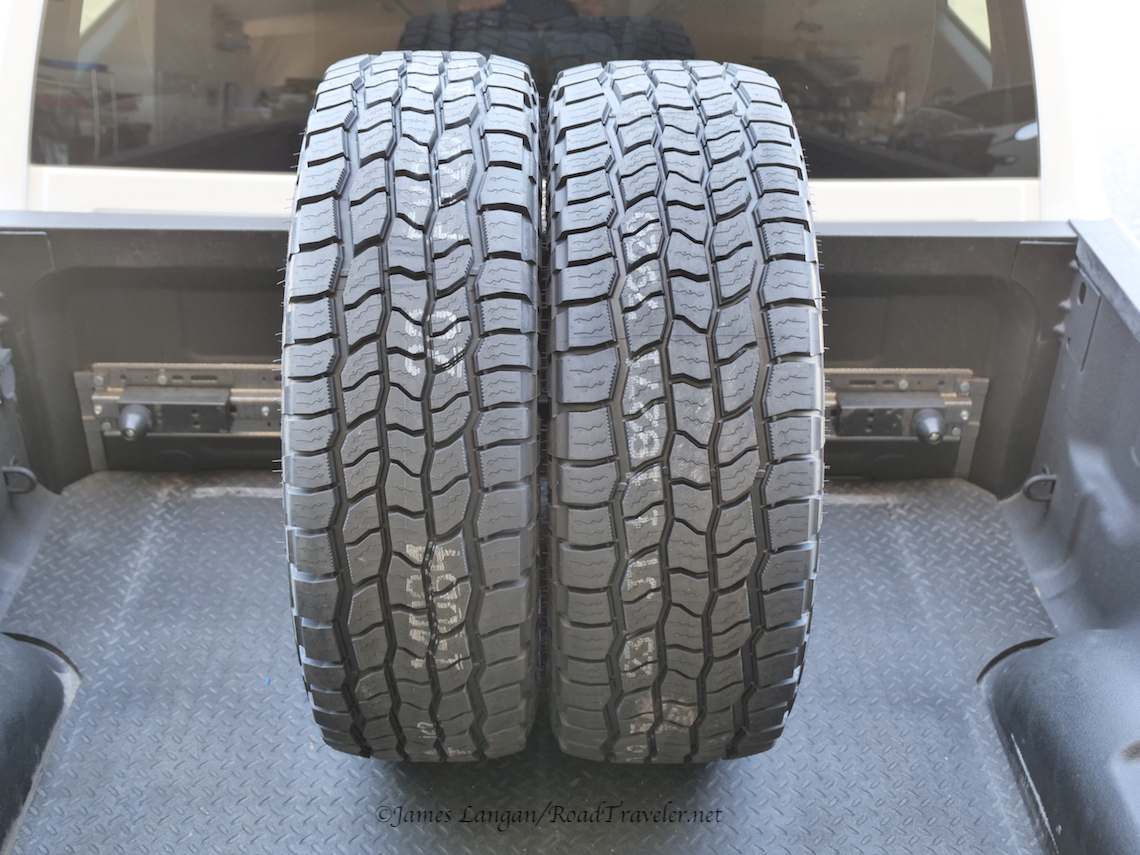
| Cooper Discoverer AT3 XLT | LT285/65R20 | LT285/75R18 |
| Load Index (SRW) | 127 = 3,860-lb | 129 = 4,080-lb |
| Height | 34.57” | 34.84” |
| Section Width | 11.5” | 11.5” |
| Tread Width | 9.69” | 8.9” |
| Weight | 62-lb | 60-lb |
| Tread Depth | 16/32” | 17/32” |
Cooper AT3 XLT General Observation
Both sizes track straight and true, as one would expect with a five-rib all-terrain. While driving through dozens of miles in heavy rain, the AT3XLT performed fantastically, evacuating water well, a forte of a ribbed tread pattern. Siping is generous to help with all slippery conditions. Though obviously not a mudder, some light, shallow mud was handled impressively well during a weeklong autumn camping trip in remote northeast Nevada.
Unless one wants a dedicated highway offering like the Cooper HT3, the AT3 XLT is a quiet, efficient design that should yield good fuel economy. The XLT has attractive, aggressive sidewall shoulder tread that looks good and should prevent both off-pavement and curb scrubbing damage.
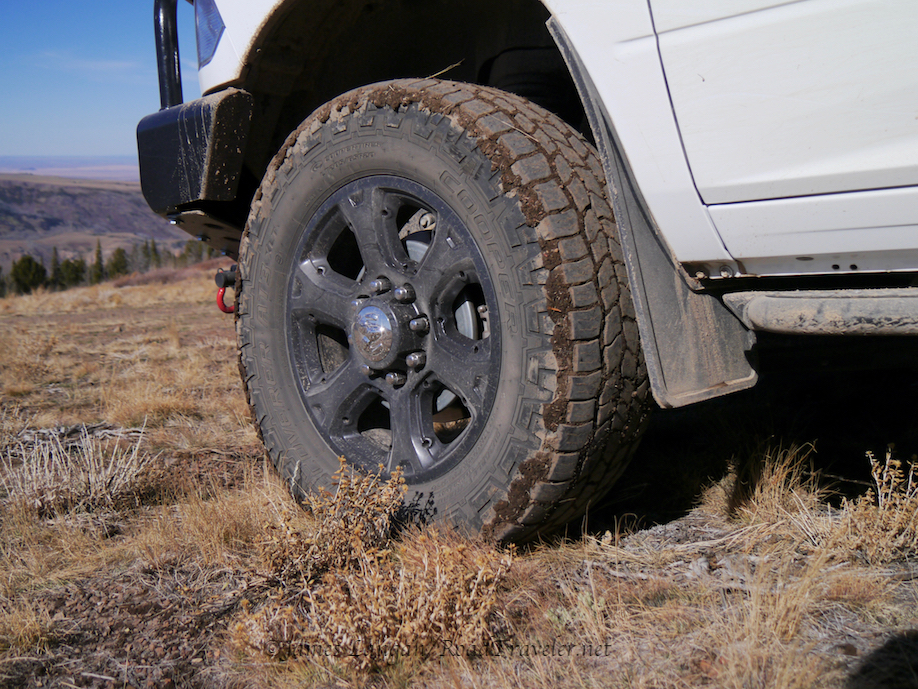
Test Drives
Several back-to-back drives were performed over six months. The first with more off-pavement miles was a 45-mile loop that included 30 miles of freeway, five miles of rural highway, and 10 miles of rocky dirt on the historic Henness Pass Road trans-Sierra route. When the road got rough, I continued for a few miles at full psi, before dramatically lowering the pressure at a specific point to improve the ride and traction.
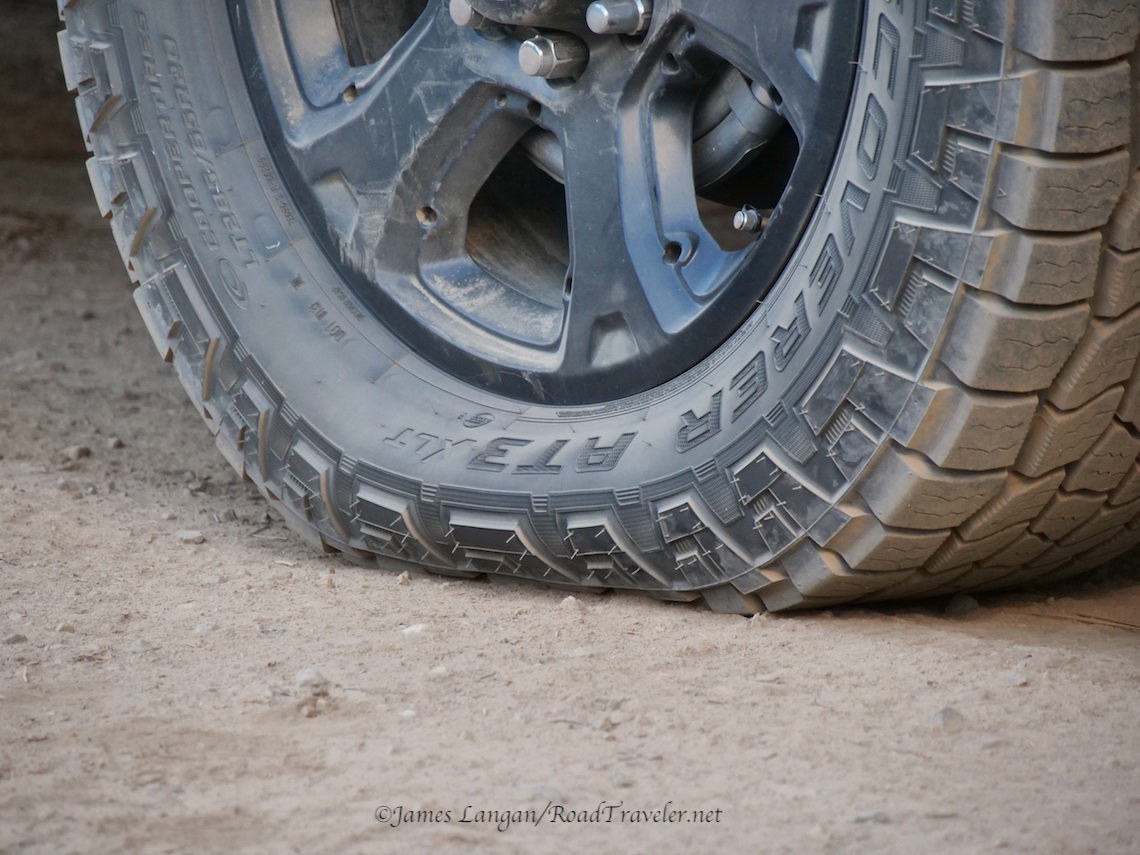
Both sets of Cooper AT3 XLT tires, and other sets of rubber in our test fleet, were swapped on-and-off our 2017 Ram regular cab flatbed for comparison. Both sets of Coopers also saw some miles on our 2014 Ram crew cab.
The 20s went on a 1,000-mile vacation with my wife and our little Welsh Terrier Elsie. That trip included over 100-miles of unpaved roads, that were occasionally rocky, snow-covered, or rough washboard. I intentionally gave the 20s more time and miles as I have much experience with Cooper 18s, including the previous AT3. As of this penning both sets have seen a combined 5,700 miles.
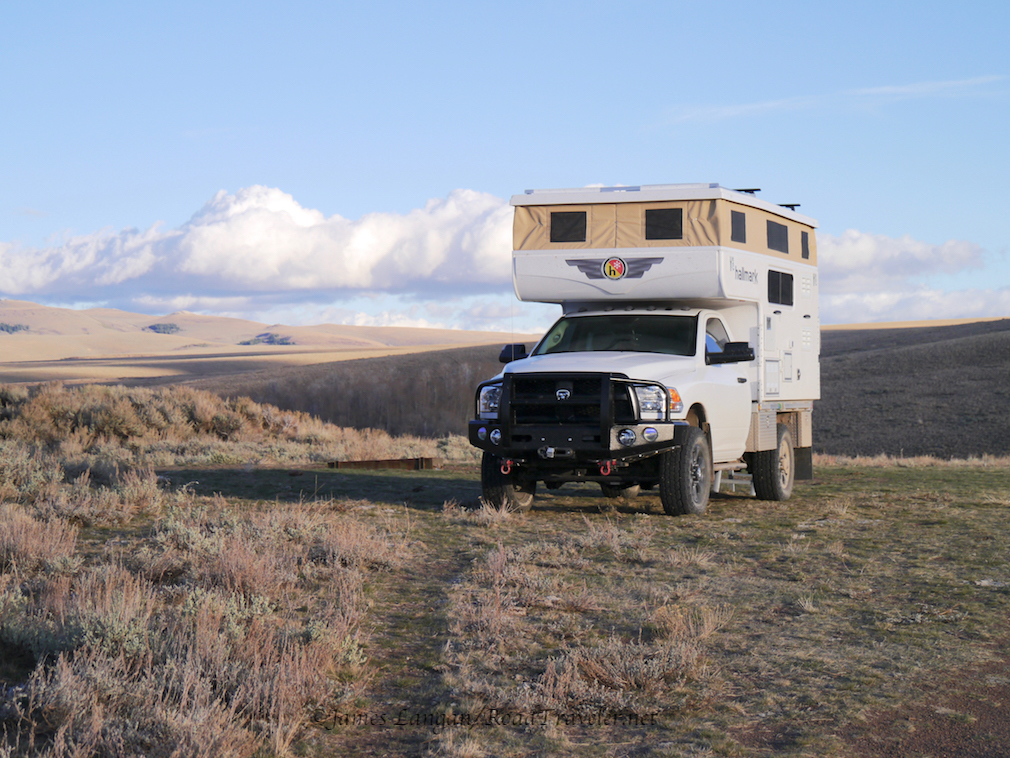
There are many potential variables to putting softer or firmer tires, and taller or shorter wheels on a chassis. If your suspension is stiff or the load is light, maybe a softer tire is better, as long as it’s not overly susceptible to punctures. Softer suspension and/or huge loads may benefit from a stouter design. The bullet points below share the pros and cons of using 20” verses 18” Cooper Discoverer AT3 XLT tires for big loads on heavy-duty trucks.
20” Tire & Wheel Positives
-Substantial improvement in lateral stability from reduced body-roll/sway when compared to 17” or 18” tires of similar construction. Feels like the improvement from adding a heavy-duty rear anti-sway bar compared to the factory bar.
-Steering feel is better, tighter, and more responsive with less delay.
-Slow, mountain turns and switchbacks with warning signs are less concerning.
-Freeway hop/bed-bounce caused by concrete freeway expansion joints is reduced.
My 140.5” wheelbase regular cab is stable and controlled over most surfaces, with inherently little freeway hop compared to the 149.5” wheelbase crew cab. Mounting the Cooper AT3 XLT 20” wheels on the crew cab both firmed-up the ride as we’d expect, and noticeably reduced freeway hop.
An important safety consideration is that even if the chassis feels stable and composed enough to increase speed in certain situations, there is only so much available traction. When we use more of the total traction available, we are reducing our safety cushion, and putting more load on the tires, which causes wear and reduces longevity.
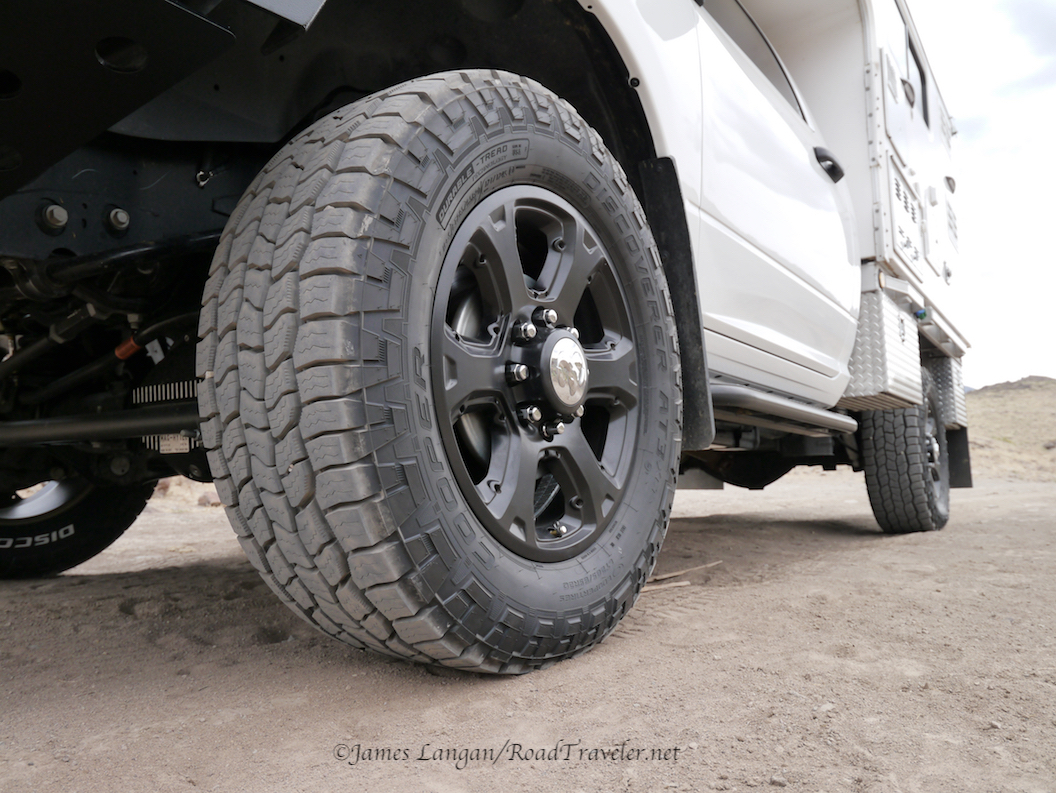
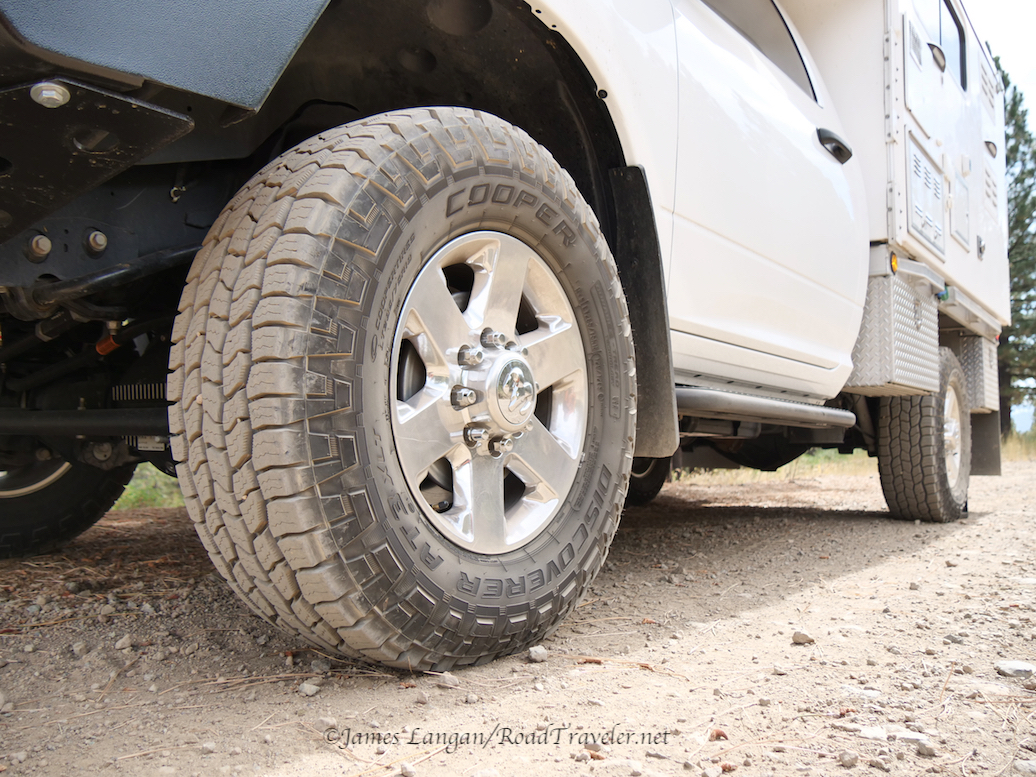
20” Tire & Wheel Negatives
-Noticeably less forgiving and rougher than the 18” tire over speed-bumps and on rocky roads at full street pressure. However, when the going gets tough, reducing psi benefits all tires and sizes tremendously. To get the same ride over rocky terrain, the 20” tire liked being about five psi lower than the 18”, particularly the fronts.
-Small bumps, cracks, or holes on the roadway are more noticeable, as the tire has less ability to absorb the imperfections. How noticeable depends on the tire construction, pressure, load, and surface. With my heavy Hallmark camper, 20″ Cooper AT3 XLT, which is admittedly a softer design, never felt harsh or uncomfortable on the pavement.
Conclusion?
My 18” vs. 20” test driving quickly convinced me that with heavy loads a shorter and/or firmer sidewall that reduces some of the squishiness of a more flexible design was a positive. The biggest tradeoff is on the roughest, unpaved surfaces, which can be mitigated by adjusting tire psi and/or choosing a taller size.
With a given design like the Cooper AT3 XLT used for this comparison, the shorter 20” sidewall was also firmer and less flexible. However, if you change the tire construction characteristics, you have changed the suspension, and you have a new baseline.
Mounting the stoutly-constructed Cooper Discoverer S/T MAXX (or similar) with 3-ply sidewalls in an 18” size delivered better overall control than the softer 20” AT3 XLT. That is not a dig against the AT3, as it intentionally targets a different audience. Want or need another level of firm performance over an 18” Cooper Discoverer S/T MAXX? You can move up to one of the 20” S/T MAXX sizes. Modifications lead to modifications, and every change can affect something else.
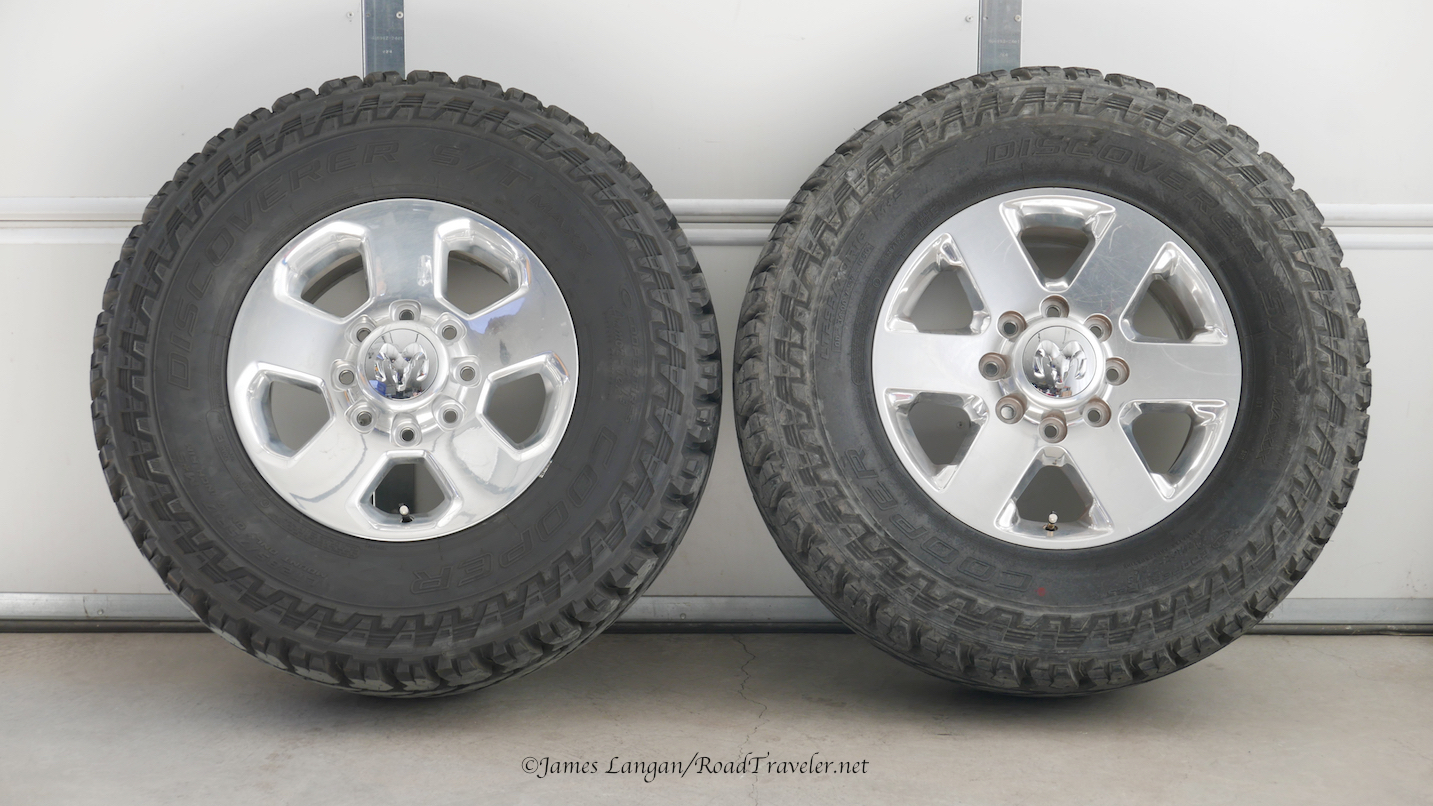
My travels include more off-pavement miles than many, so I am still evaluating where I want to make my long-term compromises, but like everyone, most of my driving is on good, paved roads. Currently I’m preferring 20″ tires for my flatbed camper outfit. My tire and suspension evaluations are continuing, and you can find additional information about these and other subjects here on RoadTraveler.net, or on Instagram, @RoadTraveler.
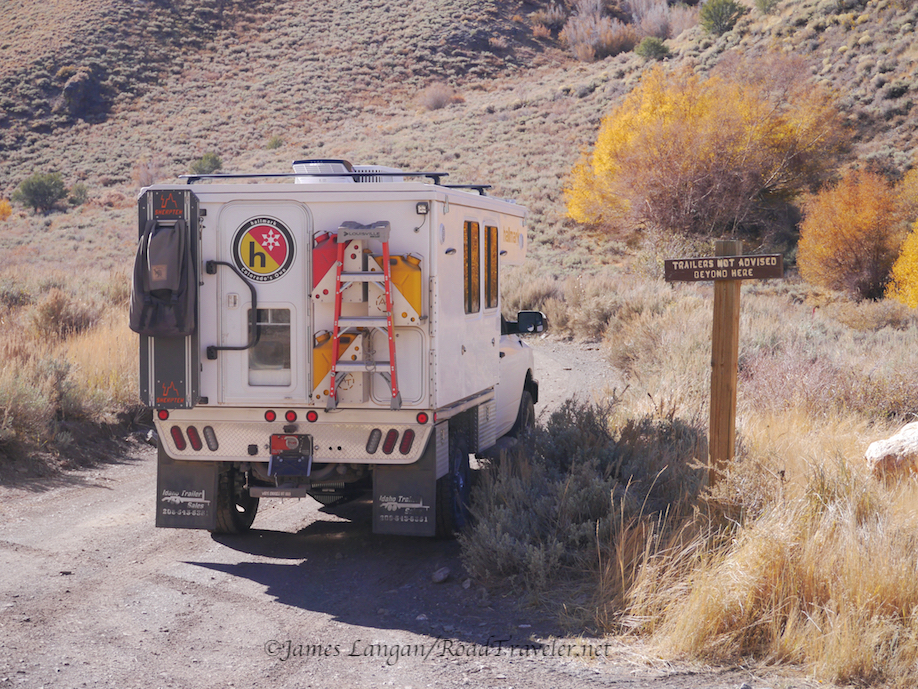
Tell ’em you saw it on RoadTraveler.net
Become a RoadTraveler patron. Thanks!
James Langan
Copyright James Langan/RoadTraveler. All Rights Reserved
Resource:

